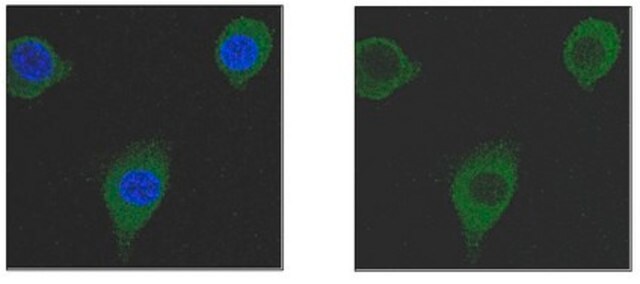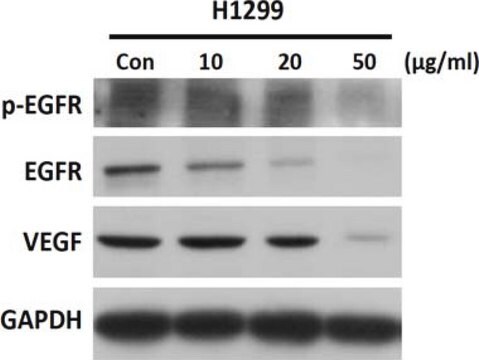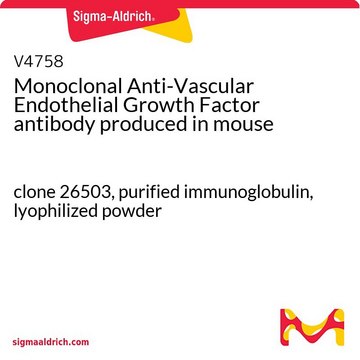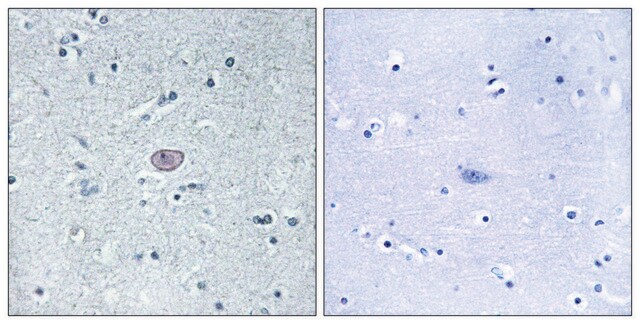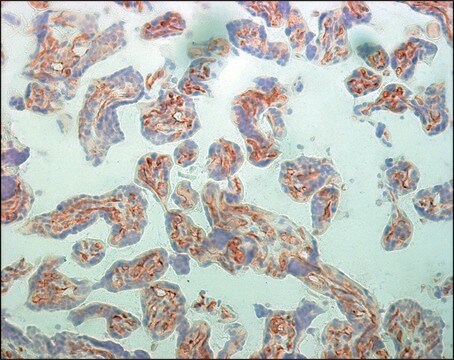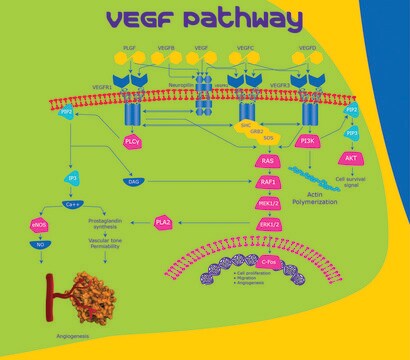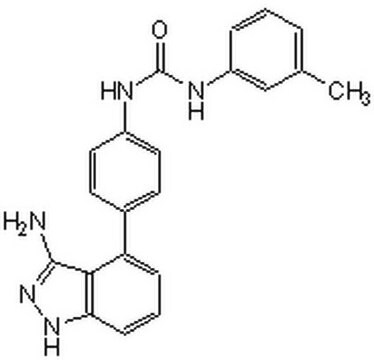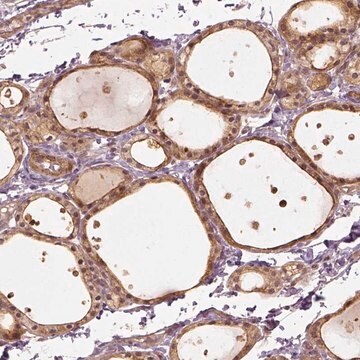V3003
Monoklonaler Anti-vaskulärer endothelialer Wachstumsfaktor-Rezeptor -2 (KDR) in Maus hergestellte Antikörper
clone 260.4, KDR-2, ascites fluid
Synonym(e):
Monoclonal Anti-Vascular Endothelial Growth Factor Receptor-2 in Maus hergestellte Antikörper, Anti-VEGFR-2
About This Item
Empfohlene Produkte
Biologische Quelle
mouse
Konjugat
unconjugated
Antikörperform
ascites fluid
Antikörper-Produkttyp
primary antibodies
Klon
260.4, KDR-2, monoclonal
Enthält
15 mM sodium azide
Speziesreaktivität
human
Methode(n)
immunohistochemistry (frozen sections): suitable
indirect ELISA: suitable
western blot: 1:500 using insect cell culture supernatant expressing human extracellular recombinant VEGFR or VEGF Receptor-2 (KDR, FLK-1)/FC Chimera human, recombinant
Isotyp
IgG1
UniProt-Hinterlegungsnummer
Versandbedingung
dry ice
Lagertemp.
−20°C
Posttranslationale Modifikation Target
unmodified
Angaben zum Gen
human ... KDR(3791)
Suchen Sie nach ähnlichen Produkten? Aufrufen Leitfaden zum Produktvergleich
Allgemeine Beschreibung
Spezifität
Immunogen
Anwendung
- immunofluorescence
- immunohistochemistry
- immunoblotting
- enzyme-linked immunosorbent assay(ELISA)
Biochem./physiol. Wirkung
Zielbeschreibung
Physikalische Form
Lagerung und Haltbarkeit
Haftungsausschluss
Sie haben nicht das passende Produkt gefunden?
Probieren Sie unser Produkt-Auswahlhilfe. aus.
Lagerklassenschlüssel
10 - Combustible liquids
WGK
WGK 3
Flammpunkt (°F)
Not applicable
Flammpunkt (°C)
Not applicable
Analysenzertifikate (COA)
Suchen Sie nach Analysenzertifikate (COA), indem Sie die Lot-/Chargennummer des Produkts eingeben. Lot- und Chargennummern sind auf dem Produktetikett hinter den Wörtern ‘Lot’ oder ‘Batch’ (Lot oder Charge) zu finden.
Besitzen Sie dieses Produkt bereits?
In der Dokumentenbibliothek finden Sie die Dokumentation zu den Produkten, die Sie kürzlich erworben haben.
Unser Team von Wissenschaftlern verfügt über Erfahrung in allen Forschungsbereichen einschließlich Life Science, Materialwissenschaften, chemischer Synthese, Chromatographie, Analytik und vielen mehr..
Setzen Sie sich mit dem technischen Dienst in Verbindung.